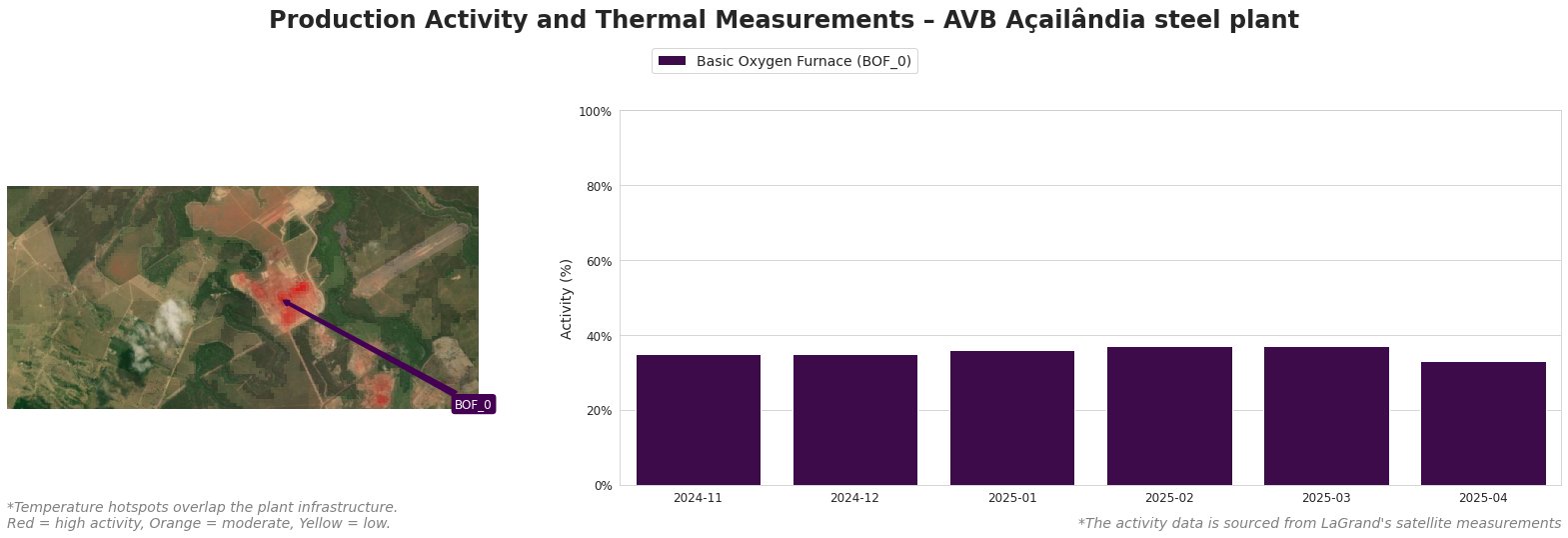
From the Field to the Dashboard – Built by Experts, for Experts.
Discover What's Really Happening in the Steel Industry
Use the AI-powered search engine to analyze production activity, market trends, and news faster than ever before.
Try the Free AI Search EngineAVB Açailândia Steel Plant Faces Activity Decline Amid Stable Regional Market Conditions
The AVB Açailândia steel plant, located in Maranhão, Brazil, has recorded a slight decline in activity levels, marking a -5.78% change over the past 90 days. As a facility with a production capacity of 600,000 tonnes of crude steel, it produces key steel products like billets, rebar, and wire rod, catering mainly to sectors such as automotive, building and infrastructure, energy, and tools and machinery.
Current Activity Trends
Recent satellite observations indicate variable activity levels in the Basic Oxygen Furnace (BOF_0) at the plant, with fluctuations suggesting operational stability amidst external market pressures.
The data shows a gradual increase in utilization from November 2024 until March 2025, followed by a decrease in April 2025. This aligns with broader market observations, such as Brazil’s Usiminas steel price outlook murky, where mixed signals regarding pricing due to rising imports and currency fluctuations are evident.
Implications for Steel Buyers and Market Analysts
The observed activity trends at AVB Açailândia suggest a potential for supply impacts as regional steel producers address varied demand dynamics. With the recent report indicating rising production in other Brazilian companies, alongside significant fluctuations in iron ore output—evidenced by Vale reduced iron ore production by 4.5% y/y in Q1—buyers may encounter pricing volatility and need to navigate a complex landscape of supply adjustments. The mixed outlook highlights the importance of monitoring operational changes closely, as these may signal potential bottlenecks or opportunities in sourcing strategies for steel products in the coming months.


